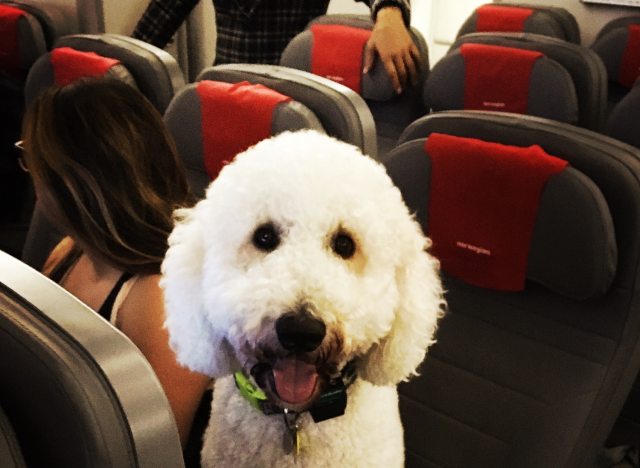We’re willing to bet that there has been at least one conversation about pets in your family. Whether you have a furry family member or not, we know that animals spark a lot of interest among kids, which is why we are sharing this interesting news article about pets in our Dinner Table Conversation series.
To kick off your family discussion, we have one simple question: Should pets be allowed in the main cabin of an airplane? With an increasing number of traveling pets, airlines and airports are having to address the controversial topic of comfort animals.
This topic provides a great opportunity for both kids and adults to discuss how rules are established, how they affect different parts of our lives and how a lack of rules can sometimes cause trouble.
When the holidays come around, many of us will be getting on airplanes to visit friends and family or to embark on a much-needed vacation. If you’re one such traveler, see if you can spot a new group of travelers growing in our midst. They often have four legs (though not always) and are an essential and important part of the traveling crew! Yep, we’re talking about pets, but not just any pets—we’re talking specifically about pets categorized as service animals. You’ve probably seen a few before helping disabled people navigate and function in the world, but did you know that service animals are also allowed on planes with their human companions?
In 2017 alone, an estimated 750,000 to 1,000,000 service animals traveled on planes in the United States, that’s significantly greater than the year before where the estimated number of service animals who traveled on planes was closer to 480,000. Why? More than three-quarters of these service animals are considered “comfort” animals or animals that are allowed to accompany passengers who need emotional or mental support when they travel.
But many passengers and airlines are calling out possible misuse of the rule that allows the service animals to travel in the main cabin in the first place. Service animals are trained to provide support to their disabled passengers, but emotional support animals don’t need to undergo any training. When a passenger claims an animal is an emotional support animal, the airline must categorize it as a service animal. This has recently created problems as claims of poorly behaved animals make their way into the news.
Airlines and passengers worry that dishonest people are using the rule to claim they need emotional support just so they can travel with their pets and avoid paying a fee. Moreover, these animals are not trained in any way to travel with their humans, so they could disrupt or disturb other passengers. Recent cases of animals attacking other passengers and even of a passenger trying to take a peacock on a flight have caused quite a bit of a headache to both passengers and airlines.
Congress recently asked the United States Department of Transportation (DOT) to change its service animal rules in order to prevent these instances of fraud. However, the question remains: How can the department make a distinction between passengers who genuinely need service animals and those that are cheating the system? One idea is to use a similar rule you might find in a grocery store, shop or restaurant. Only trained service animals are allowed to enter many of these facilities and they should be able to help their humans navigate.
In 2019, DOT will be issuing its new rules, but we want to know what you think. How would you help DOT avoid people from taking advantage of the system? Should pets be allowed in the main cabin of an airplane with passengers?











